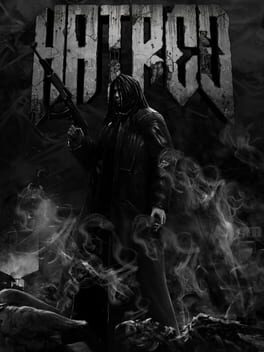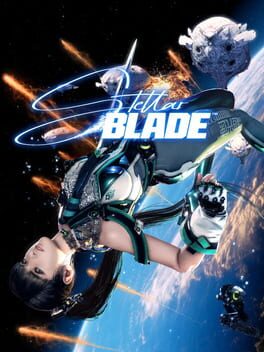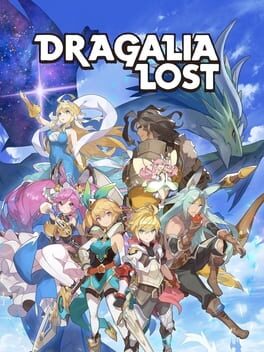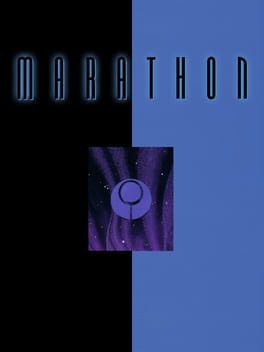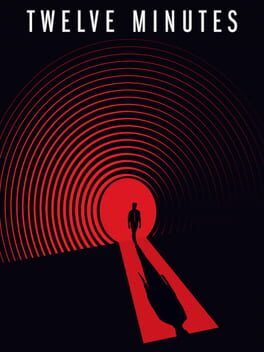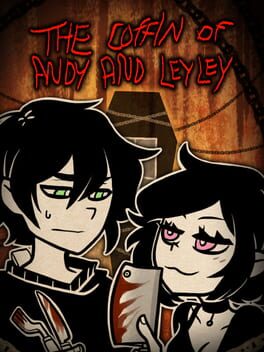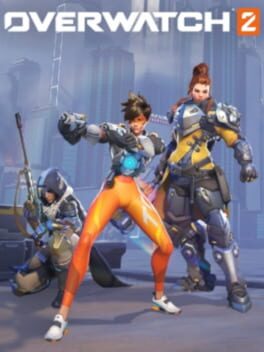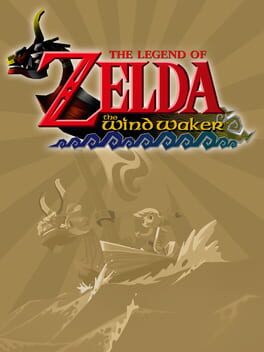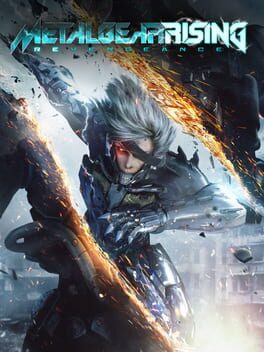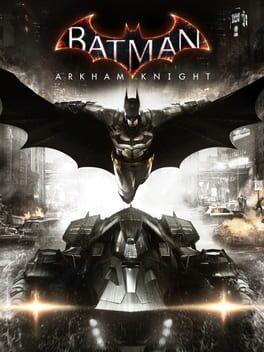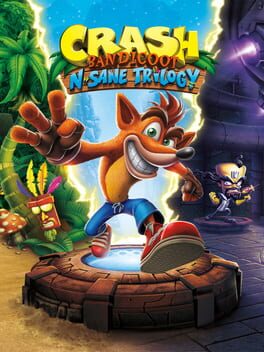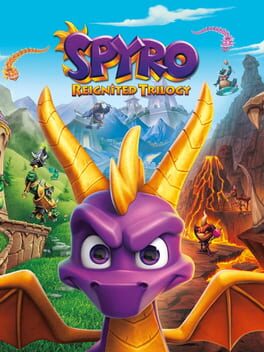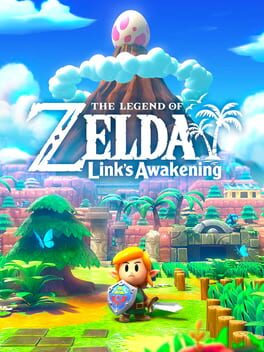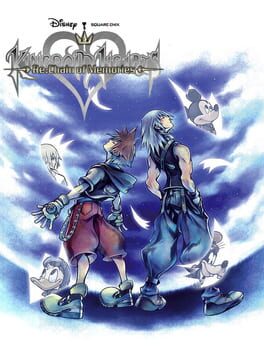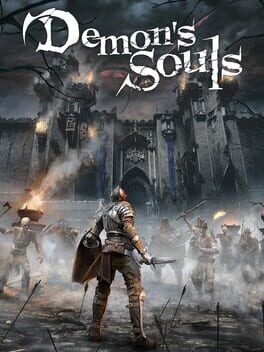BombsOverBaghdad
163 reviews liked by BombsOverBaghdad
Hatred
2015
A thought that has entered my head.
I don't know the state of "wholesome" in video games, but from what little I got into it, for me most opinologists failed at the point that they pointed to gamified mundane activities (of which I am a moderate fan) as a response to violence, being in reality many of these activities, such as fishing or cutting down trees, could be interpreted as a form of ecological violence without
"Enemies". This is how they usually present the digital entities that we face. But we are not "enemies" in games that do not contextualize terraforming or indiscriminate exploitation of resources? Bending the Minecraft and Animal Crossing regions is fine, but the Hatred neighborhood is wrong?
Video games separate people, individuals.
I am more inclined towards the creation or presentation of physical conflict through sports, preferably fictitious, but hey.
Video game creators shouldn't fear violence. Its exploration in fictional contexts is important, in all its facets and perspectives, and few media are better than the video game to do so. It doesn't matter if they are explorations of violence and recreation of conflict in a loop like in the Taroverse, or action works that explore identity and personal emptiness through stylization and hunting as a way of life, like Itsuno's Devil May Cry .
Hatred and the original Postal do their thing in a not so different way because they are a kind of horror games that do not deal with the subject of violence in a standard way, they do not offer the stereotypical heroic fantasy or resemble the examples of before, no evocative, but they are honest, they present violence as a grotesque activity in a neighborhood with a Dollhouse aesthetic (also Nier Repliant did) and they expose something that, although it needs an appropriate and convincing contextualization, is very real: violence is something easy to exercise , in almost all its forms, and in video games it's something we just do because it's satisfying. Already, there are a few pop video games that reflect on this (Taroverse, SpO: The line, Max Payne 3, bioshock...) but they usually need context or even a bait to bite so that we enter their conversation without feeling offended, for what? Why is MWII acceptable ("acceptable") until it puts us in terrorist control very explicitly? There was some controversy there, but not so much that in every TD game anyone can be a terrorist? Is it okay to play practically the same as Hatred in The Last of us part II just because that game has a -poor- excuse to contextualize scenes of extreme photorealistic ultragraphic violence? And come on, TLoU2 has no real intention of making us uncomfortable.
At least not much more than the intention of offering a satisfying time through fairly well-constructed action. But, again, Far Cry 3? 60% of the games? I don't know, a study on it would be interesting. As long as it doesn't have something like Under the skin as a scale for when you try to put the player in the skin of the antagonist or monster, but, hey.
-------------------------------------------------- -------------------------------------------------- -----
It's weird, this violence thing reminds me a bit of what was said about "this game makes you feel like batman/spiderman/superhero" and I was like: "Bro, almost all games make you feel like a superhero without a cape"
-------------------------------------------------- -------------------------------------------------- -----
__
KANE & LYNCH 2:
BEST GAME
WESTERN SPREADING CHAOS IN SHANGHAI, THE DIGITAL IMAGE PORTRAITS THE EAST AS A PLAYING FIELD. awful everything. play it
Arduween 1x09
I don't know the state of "wholesome" in video games, but from what little I got into it, for me most opinologists failed at the point that they pointed to gamified mundane activities (of which I am a moderate fan) as a response to violence, being in reality many of these activities, such as fishing or cutting down trees, could be interpreted as a form of ecological violence without
"Enemies". This is how they usually present the digital entities that we face. But we are not "enemies" in games that do not contextualize terraforming or indiscriminate exploitation of resources? Bending the Minecraft and Animal Crossing regions is fine, but the Hatred neighborhood is wrong?
Video games separate people, individuals.
I am more inclined towards the creation or presentation of physical conflict through sports, preferably fictitious, but hey.
Video game creators shouldn't fear violence. Its exploration in fictional contexts is important, in all its facets and perspectives, and few media are better than the video game to do so. It doesn't matter if they are explorations of violence and recreation of conflict in a loop like in the Taroverse, or action works that explore identity and personal emptiness through stylization and hunting as a way of life, like Itsuno's Devil May Cry .
Hatred and the original Postal do their thing in a not so different way because they are a kind of horror games that do not deal with the subject of violence in a standard way, they do not offer the stereotypical heroic fantasy or resemble the examples of before, no evocative, but they are honest, they present violence as a grotesque activity in a neighborhood with a Dollhouse aesthetic (also Nier Repliant did) and they expose something that, although it needs an appropriate and convincing contextualization, is very real: violence is something easy to exercise , in almost all its forms, and in video games it's something we just do because it's satisfying. Already, there are a few pop video games that reflect on this (Taroverse, SpO: The line, Max Payne 3, bioshock...) but they usually need context or even a bait to bite so that we enter their conversation without feeling offended, for what? Why is MWII acceptable ("acceptable") until it puts us in terrorist control very explicitly? There was some controversy there, but not so much that in every TD game anyone can be a terrorist? Is it okay to play practically the same as Hatred in The Last of us part II just because that game has a -poor- excuse to contextualize scenes of extreme photorealistic ultragraphic violence? And come on, TLoU2 has no real intention of making us uncomfortable.
At least not much more than the intention of offering a satisfying time through fairly well-constructed action. But, again, Far Cry 3? 60% of the games? I don't know, a study on it would be interesting. As long as it doesn't have something like Under the skin as a scale for when you try to put the player in the skin of the antagonist or monster, but, hey.
-------------------------------------------------- -------------------------------------------------- -----
It's weird, this violence thing reminds me a bit of what was said about "this game makes you feel like batman/spiderman/superhero" and I was like: "Bro, almost all games make you feel like a superhero without a cape"
-------------------------------------------------- -------------------------------------------------- -----
__
KANE & LYNCH 2:
BEST GAME
WESTERN SPREADING CHAOS IN SHANGHAI, THE DIGITAL IMAGE PORTRAITS THE EAST AS A PLAYING FIELD. awful everything. play it
Arduween 1x09
Stellar Blade
2024
(Demo abandoned)
What the fuck are we doing? How the hell did Dark Souls 3 become the template for action games?
"Oh, it's the potential for good levels!" But what would good level design even look like in this context? Dark Souls 1 has a simple combat system that doesn't rely on large open spaces without obstacles. This way the player can be trusted to defend themselves in most terrain, which in turn enables designs like Blighttown, Sen's Fortress, New Londo Ruins, etc. where enemies can meaningfully interact with the level geometry. One can argue how consistently applied or successful this was in practice, but there is a solid design goal there that's still visible even up to Elden Ring (as scattershot as that game is).
As you make combat systems and enemy AI more complex though, generally you'll have to start making the simplifying assumptions of plenty of open space and no blocking terrain, which in turn restricts your level design capabilities. This is fine if you build the game accordingly, i.e. most of the classic linear action games. But Dark Souls 3 likes do not actually seem to be aware of this and so have dragged along huge amounts of bloat sections (Stellar Blade: swimming, keypads, climbing) so they can continue to pretend that the spaces between fights have any relation to the actual mechanics.
Similarly constructed arguments can also be made for the following Souls systems, which I will leave as an exercise to the reader: items, camera, pacing, leveling.
So I guess the whole point of these games is to grit your teeth so that you can experience the combat system? But is the combat really all that interesting? The camera limits how many aggressive enemies you can reasonably handle at once, and not being able to hitstun enemies with normal attacks pushes you into hit and run defensive play, which in turn pushes you to abuse the simplistic, timing-based parrying and iframe systems that all these games are cursed with. Why bother when you can just play Nioh 2, which commits all the soulslike sins above but at least has actually interesting resource management, accessible hitstun, deep weapon movesets, and so on. Why play any of these games at all when you can play Monster Hunter where the defensive, commitment driven style that soulslikes are known for is a hundred times better executed?
This whole subgenre is a complete dead-end design wise and doesn't look to be getting better anytime soon. What a mess.
What the fuck are we doing? How the hell did Dark Souls 3 become the template for action games?
"Oh, it's the potential for good levels!" But what would good level design even look like in this context? Dark Souls 1 has a simple combat system that doesn't rely on large open spaces without obstacles. This way the player can be trusted to defend themselves in most terrain, which in turn enables designs like Blighttown, Sen's Fortress, New Londo Ruins, etc. where enemies can meaningfully interact with the level geometry. One can argue how consistently applied or successful this was in practice, but there is a solid design goal there that's still visible even up to Elden Ring (as scattershot as that game is).
As you make combat systems and enemy AI more complex though, generally you'll have to start making the simplifying assumptions of plenty of open space and no blocking terrain, which in turn restricts your level design capabilities. This is fine if you build the game accordingly, i.e. most of the classic linear action games. But Dark Souls 3 likes do not actually seem to be aware of this and so have dragged along huge amounts of bloat sections (Stellar Blade: swimming, keypads, climbing) so they can continue to pretend that the spaces between fights have any relation to the actual mechanics.
Similarly constructed arguments can also be made for the following Souls systems, which I will leave as an exercise to the reader: items, camera, pacing, leveling.
So I guess the whole point of these games is to grit your teeth so that you can experience the combat system? But is the combat really all that interesting? The camera limits how many aggressive enemies you can reasonably handle at once, and not being able to hitstun enemies with normal attacks pushes you into hit and run defensive play, which in turn pushes you to abuse the simplistic, timing-based parrying and iframe systems that all these games are cursed with. Why bother when you can just play Nioh 2, which commits all the soulslike sins above but at least has actually interesting resource management, accessible hitstun, deep weapon movesets, and so on. Why play any of these games at all when you can play Monster Hunter where the defensive, commitment driven style that soulslikes are known for is a hundred times better executed?
This whole subgenre is a complete dead-end design wise and doesn't look to be getting better anytime soon. What a mess.
Dragalia Lost
2018
After playing it for 2 and a half years (I joined halfway through the second anniversary when I finally jumped from a shitty iPhone to an Android), I was considering writing up a review of this game. Never imagined it would turn into a eulogy.
Dragalia Lost is a collaborative effort between Nintendo and Cygames, taking the throne of Nintendo's only wholly unique mobile title. The most barebones description of the game would be "a touch-controlled top-down dungeon crawler with a heavy emphasis on boss fights", but something simple like that feels like a disservice to everything I love about this game. So that's my justification for what I can only imagine will be an abnormally long retrospective for a gacha game found below this point. Buckle up.
The controls are simple. Touch and drag in a direction on the screen to move in that direction. Swipe in a direction to dodge in that direction. Tap the screen repeatedly to attack. Touch and hold to do a "force strike" (charged attack). Tap either skill button at the bottom of the screen to use that skill when it's charged. That's really all there is to know, and it's all that's necessary for the main crux of Dragalia Lost: its boss fights. All you gotta do is dodge through normal attacks (shown through red inidcators) and outright avoid undodgeable attacks (shown through purple indicators). Sounds easy when you put it like that, but in practice? It gets insane real quick. The keys to success are preparation, improvisation, and memorization. Knowing is half the battle after all, and most bosses do follow patterns when performing their moves. There will always be situations where you'll have to make a choice in the moment though: Does this move have enough i-frames? Should I use my shapeshift to tank this unavoidable attack, or save it so I can do massive damage when the boss' defenses are broken? And most importantly: Was I even properly prepared going in?
Power creep comes naturally with the nature of gacha, driving you to roll for better characters, but Dragalia's focus on a large quantity of characters that are all upgraded from the same pools of resources allowed most of the "weaker" units to be viable for most of the game's content. Every single character has their quirks, many are better against certain enemies, and many work best when paired up with other specific characters. Teams consist of four characters, each one gets a weapon, a dragon, and five wyrmprints (stat modifiers with really nice artwork attached). Gradually making your teams strong enough to fight endgame content had the unfortunate side effect of making "normal" content essentially play itself. They did solve this later in the game's life by having specific story-related quests give your team fixed stats, but I personally would've liked to see them take it a step further, like letting us manually limit our character's levels for the sake of self-imposed challenge. (the kaleidoscape managed to do this somewhat, more on that later)
Outside of the emphasis on boss battles, Dragalia got to be experimental with what it could squeeze out of its gameplay. There's a dedicated battle royale mode. The game's April Fool's Day jokes ended up being a shoot-em-up and a mode where you play with a dog and take photos. During the last year of its life, they added a mode called "Enter the Kaleidoscape", a roguelite mode where you descend a randomized 50-floor gauntlet with any character in your roster. They're reset back to level 1, and you need to make do with the randomized equipment drops to tough your way through. I don't mean this as a backhanded compliment: Dragalia Lost is a great example of reusing assets to their fullest potential, and working within the scale of what you've got.
Dragalia Lost was just a really accessible game in general. Materials of higher rarities could be exchanged for ones of lower rarities (and vice versa). Something this game inherited from Princess Connect: Re:Dive was Skip Tickets, a consumable that allows you to reap the rewards of a quest you've already beaten, without actually having to play it. Dragalia is also home to a feature that all gachas should have: the Event Compendium. Missed an event the first time around?Joined the game two years after its initial launch? Need to hoard some more rewards? Stamina and free time burning a hole in your pocket? The Event Compendium basically ensures that you'll have new content to tackle for a damn long while, and you can do so at your leisure. Notte's Notes was another good feature, a library containing nearly every single story event and your roster of adventurers/dragons. You can view their 2D art/3D models, hear some voice clips, rewatch their gacha pull animations, it's all great stuff.
The music drives this game's identity and energy. Coupled with the presentation overall, it transforms the game into something greater, a "straight vibe" is what I believe the kids call it. DAOKO's soundtrack serves as a backbeat for the whole game, really. Her early involvement in creating many of the game's most commonly used songs go a long way. This isn't to discredit all the other talent that worked on Dragalia Lost's music though. The whole OST is incredible. The characters bob their heads to the beat of whatever music is playing in the menus, something I will never fail to think of when I hear "Bokurano Network." Not to mention that the UI is clean and fluid, the way everything slides in and out of frame in the menus is so damn smooth. None of the backdrops for the dialogue segments are static imagery, there's always some subtle bit of life to them. It can be something as simple as foliage swaying in the visible breeze, the clouds passing overhead, light peeking through the treetops, dust particles floating around a musty old room, among countless other examples. A little bit of life in your more mundane elements goes a long way, and Dragalia Lost goes the distance.
On the topic of those character and dragon designs, they're all excellent, even the lesser ones. Character art was all done by one person, Naoki Saito, and that kind of unified style comes through in every character. No two are alike, but no one looks out of place either. Every design is elaborate and colorful, from the main characters to the NPCs. Dragons in particular stand out for not being limited to the typical portrayal of "big lizard monster." Dragons come in all shapes, sizes, and forms in Dragalia Lost (and they're also all designed by one artist!) Dragalia's setting allowed for tons of creative freedom in terms of characters, species, scenarios, and world-building. There's a church system divided by two vastly different sets of beliefs, an set of small islands overseas called "Hinomoto", a species of forest-dwelling rabbit people called "Sylvans", an underwater city of fish people (we were robbed of a playable fish person), celebrations of the lunar new year, and so much more.
A lot of my praise goes to the excellent localization work by 8-4 Ltd and the really good English voice actors, minimal as the voice clips may be. Being a fresh IP under Nintendo's brand and combined with Cygames' connections, Dragalia had the opportunity to have crossovers with tons of out-there properties, including Fire Emblem, Mega Man, Monster Hunter, Persona 5, and Princess Connect: ReDive. All the adventurer stories are worth reading to some degree. Every single one manages to have their own self-contained arc. Dragon stories take the form of fables long since passed. Some of my favorite characters/stories include:
-demon child and her two gay dads
-anything about the Apostles, messengers of Her divine will;Christianity has never been cooler
-Audric and Cassandra. hoo boy.
-The goddess of this world is actually a spunky young alchemist with an adoptive fairy mother
-Pop star mermaid dragon
Finally, I wanna take a moment to thank the community for being so cool. Every time I had a question, wanted help building a team, struggled to wrap my head around the Wyrmprint system, or wanted to play co-op with people who understood what they were even doing, the Discord server was there for me. I'm never gonna forget the jabs we took at Genshin Impact's 1st anniversary (if you could even call it one) versus our third anniversary. Hell, once EoS was announced, I witnessed them going full steam ahead into archival mode. For all the doomposting we joked about, I don't think any of us wanted it for real. We just knew that the announcement could come any day.
Even though Dragalia Lost will reach its end-of-service soon, the one thing I'm the most satisfied with is how the game will end with dignity. The plug won't be pulled prematurely; as of me writing this, the game's campaign has finished with the conclusion of its final chapter. I have no doubt in my mind that I'm going to miss this game. I bought the artbook and both soundtrack CDs just so I'll have something tangible to remember the game by. In the not-so-distant future, the only way to relive all this game's content will be to load up a YouTube playlist from an archive project. It makes a part of me feel hollow, knowing that I'll likely never enjoy this game in its original format ever again. I've always known this to be the eventual fate of all gacha games, but I can't say I ever imagined I would get attached to one like this, much less watch it fade away in real time. So, once more for the road:
Thank you Cygames, and thank you, Mr. Lost.
Dragalia Lost is a collaborative effort between Nintendo and Cygames, taking the throne of Nintendo's only wholly unique mobile title. The most barebones description of the game would be "a touch-controlled top-down dungeon crawler with a heavy emphasis on boss fights", but something simple like that feels like a disservice to everything I love about this game. So that's my justification for what I can only imagine will be an abnormally long retrospective for a gacha game found below this point. Buckle up.
The controls are simple. Touch and drag in a direction on the screen to move in that direction. Swipe in a direction to dodge in that direction. Tap the screen repeatedly to attack. Touch and hold to do a "force strike" (charged attack). Tap either skill button at the bottom of the screen to use that skill when it's charged. That's really all there is to know, and it's all that's necessary for the main crux of Dragalia Lost: its boss fights. All you gotta do is dodge through normal attacks (shown through red inidcators) and outright avoid undodgeable attacks (shown through purple indicators). Sounds easy when you put it like that, but in practice? It gets insane real quick. The keys to success are preparation, improvisation, and memorization. Knowing is half the battle after all, and most bosses do follow patterns when performing their moves. There will always be situations where you'll have to make a choice in the moment though: Does this move have enough i-frames? Should I use my shapeshift to tank this unavoidable attack, or save it so I can do massive damage when the boss' defenses are broken? And most importantly: Was I even properly prepared going in?
Power creep comes naturally with the nature of gacha, driving you to roll for better characters, but Dragalia's focus on a large quantity of characters that are all upgraded from the same pools of resources allowed most of the "weaker" units to be viable for most of the game's content. Every single character has their quirks, many are better against certain enemies, and many work best when paired up with other specific characters. Teams consist of four characters, each one gets a weapon, a dragon, and five wyrmprints (stat modifiers with really nice artwork attached). Gradually making your teams strong enough to fight endgame content had the unfortunate side effect of making "normal" content essentially play itself. They did solve this later in the game's life by having specific story-related quests give your team fixed stats, but I personally would've liked to see them take it a step further, like letting us manually limit our character's levels for the sake of self-imposed challenge. (the kaleidoscape managed to do this somewhat, more on that later)
Outside of the emphasis on boss battles, Dragalia got to be experimental with what it could squeeze out of its gameplay. There's a dedicated battle royale mode. The game's April Fool's Day jokes ended up being a shoot-em-up and a mode where you play with a dog and take photos. During the last year of its life, they added a mode called "Enter the Kaleidoscape", a roguelite mode where you descend a randomized 50-floor gauntlet with any character in your roster. They're reset back to level 1, and you need to make do with the randomized equipment drops to tough your way through. I don't mean this as a backhanded compliment: Dragalia Lost is a great example of reusing assets to their fullest potential, and working within the scale of what you've got.
Dragalia Lost was just a really accessible game in general. Materials of higher rarities could be exchanged for ones of lower rarities (and vice versa). Something this game inherited from Princess Connect: Re:Dive was Skip Tickets, a consumable that allows you to reap the rewards of a quest you've already beaten, without actually having to play it. Dragalia is also home to a feature that all gachas should have: the Event Compendium. Missed an event the first time around?
The music drives this game's identity and energy. Coupled with the presentation overall, it transforms the game into something greater, a "straight vibe" is what I believe the kids call it. DAOKO's soundtrack serves as a backbeat for the whole game, really. Her early involvement in creating many of the game's most commonly used songs go a long way. This isn't to discredit all the other talent that worked on Dragalia Lost's music though. The whole OST is incredible. The characters bob their heads to the beat of whatever music is playing in the menus, something I will never fail to think of when I hear "Bokurano Network." Not to mention that the UI is clean and fluid, the way everything slides in and out of frame in the menus is so damn smooth. None of the backdrops for the dialogue segments are static imagery, there's always some subtle bit of life to them. It can be something as simple as foliage swaying in the visible breeze, the clouds passing overhead, light peeking through the treetops, dust particles floating around a musty old room, among countless other examples. A little bit of life in your more mundane elements goes a long way, and Dragalia Lost goes the distance.
On the topic of those character and dragon designs, they're all excellent, even the lesser ones. Character art was all done by one person, Naoki Saito, and that kind of unified style comes through in every character. No two are alike, but no one looks out of place either. Every design is elaborate and colorful, from the main characters to the NPCs. Dragons in particular stand out for not being limited to the typical portrayal of "big lizard monster." Dragons come in all shapes, sizes, and forms in Dragalia Lost (and they're also all designed by one artist!) Dragalia's setting allowed for tons of creative freedom in terms of characters, species, scenarios, and world-building. There's a church system divided by two vastly different sets of beliefs, an set of small islands overseas called "Hinomoto", a species of forest-dwelling rabbit people called "Sylvans", an underwater city of fish people (we were robbed of a playable fish person), celebrations of the lunar new year, and so much more.
A lot of my praise goes to the excellent localization work by 8-4 Ltd and the really good English voice actors, minimal as the voice clips may be. Being a fresh IP under Nintendo's brand and combined with Cygames' connections, Dragalia had the opportunity to have crossovers with tons of out-there properties, including Fire Emblem, Mega Man, Monster Hunter, Persona 5, and Princess Connect: ReDive. All the adventurer stories are worth reading to some degree. Every single one manages to have their own self-contained arc. Dragon stories take the form of fables long since passed. Some of my favorite characters/stories include:
-demon child and her two gay dads
-anything about the Apostles, messengers of Her divine will;
-Audric and Cassandra. hoo boy.
-The goddess of this world is actually a spunky young alchemist with an adoptive fairy mother
-Pop star mermaid dragon
Finally, I wanna take a moment to thank the community for being so cool. Every time I had a question, wanted help building a team, struggled to wrap my head around the Wyrmprint system, or wanted to play co-op with people who understood what they were even doing, the Discord server was there for me. I'm never gonna forget the jabs we took at Genshin Impact's 1st anniversary (if you could even call it one) versus our third anniversary. Hell, once EoS was announced, I witnessed them going full steam ahead into archival mode. For all the doomposting we joked about, I don't think any of us wanted it for real. We just knew that the announcement could come any day.
Even though Dragalia Lost will reach its end-of-service soon, the one thing I'm the most satisfied with is how the game will end with dignity. The plug won't be pulled prematurely; as of me writing this, the game's campaign has finished with the conclusion of its final chapter. I have no doubt in my mind that I'm going to miss this game. I bought the artbook and both soundtrack CDs just so I'll have something tangible to remember the game by. In the not-so-distant future, the only way to relive all this game's content will be to load up a YouTube playlist from an archive project. It makes a part of me feel hollow, knowing that I'll likely never enjoy this game in its original format ever again. I've always known this to be the eventual fate of all gacha games, but I can't say I ever imagined I would get attached to one like this, much less watch it fade away in real time. So, once more for the road:
Thank you Cygames, and thank you, Mr. Lost.
Marathon
1994
you thought halo ce aged poorly?
...then how the hell was bungie utterly outshining that game's level design a whopping 7+ years before it was even conceived?! for a game of so many firsts in first person shooters, it's unnerving how little recognition marathon gets. not to mention how many of its pioneered ideas are often wrongfully attributed to the likes of half life; health stations, friendly npcs and narrative drive, to name a few
more than anything being falsely credited however, i'm upset that this melee combat hasn't been actively replicated by literally every succeeding fps. typically when playing a shooter - especially on harder difficulties - most people start pissing their pants as soon as they fire their last clip. doom with fists only? duke with his shoe? sure, it's been done for challenge's sake, but is it ever optimal?
it is in marathon because your fists don't deal static damage - rather their power increases with speed. on total carnage, the most standard enemy can eat 6 whole pistol rounds before he croaks; that's trivialized to 3 quick meetings between fist and face if you know what you're doing. simply put, punching dudes till they explode is insanely addictive. tell me this isn't the sickest shit and i'll rightfully call you a liar
a few of the levels here would make halo's library check the fuck out (colony ship for sale and pfhoraphobia most notably) but despite the sadism, i'd call most everything here pretty well designed and memorable thanks to some solid puzzles and smartly-placed save points. weapons are fairly basic, but the alternate firing modes (another bungie-birthed fps mechanic - go figure) help vary things up a good bit. shoutouts to the fusion pistol, flamethrower and whatever the fuck that alien gun is in particular - especially the alien gun because i adore it
narratively, there's definitely stuff of interest being brewed and i'm more invested here than i ever was in the original halo's plot, but i can tell things are just getting started. so onward i go - to durandal...
...then how the hell was bungie utterly outshining that game's level design a whopping 7+ years before it was even conceived?! for a game of so many firsts in first person shooters, it's unnerving how little recognition marathon gets. not to mention how many of its pioneered ideas are often wrongfully attributed to the likes of half life; health stations, friendly npcs and narrative drive, to name a few
more than anything being falsely credited however, i'm upset that this melee combat hasn't been actively replicated by literally every succeeding fps. typically when playing a shooter - especially on harder difficulties - most people start pissing their pants as soon as they fire their last clip. doom with fists only? duke with his shoe? sure, it's been done for challenge's sake, but is it ever optimal?
it is in marathon because your fists don't deal static damage - rather their power increases with speed. on total carnage, the most standard enemy can eat 6 whole pistol rounds before he croaks; that's trivialized to 3 quick meetings between fist and face if you know what you're doing. simply put, punching dudes till they explode is insanely addictive. tell me this isn't the sickest shit and i'll rightfully call you a liar
a few of the levels here would make halo's library check the fuck out (colony ship for sale and pfhoraphobia most notably) but despite the sadism, i'd call most everything here pretty well designed and memorable thanks to some solid puzzles and smartly-placed save points. weapons are fairly basic, but the alternate firing modes (another bungie-birthed fps mechanic - go figure) help vary things up a good bit. shoutouts to the fusion pistol, flamethrower and whatever the fuck that alien gun is in particular - especially the alien gun because i adore it
narratively, there's definitely stuff of interest being brewed and i'm more invested here than i ever was in the original halo's plot, but i can tell things are just getting started. so onward i go - to durandal...
Anatomy
2016
This review contains spoilers
(If you haven't played Anatomy, don't read yet!)
Surprises me how nobody mentions that this game works perfectly as a representation of trauma, which I think was Kitty's intention. And considering it does so using a house as an analog, it's done really well.
The House lashes out violently at you, its "Intruder", in a fit of rage so strong that the House's own reality begins to distort. We never know if the part you play is one of malicious intent, but the House thinks so, and so it hurts you. I think the reason it does is revealed in the epilogue, where it mentions the House being abandoned by its builders once it was no longer of use. In its lonesome, ever-wondering why that was and if it was its fault or theirs, the House builds a toxic mental place by building "shadow puppets" molded by its experiences, reliving the past and hurting itself over its own memories. I think the man that's "breaking and upsetting things", that the House leaves down in the basement (never to be dealt with) is one of those puppets. Feeling wrong, and wronged at the same time, makes it grow bitter and violent, and so it lashes out at subsequent occupants, the people that try to get close to it ("if my own builders were capable of hurt, then what it awaits me?"), creating a cycle of self-harm and self-hatred that in its mind validates the decision of the builders of hurting it because it's evil. Succumbing the House into its dark thoughts, and corrupting it more and more.
Admittedly, I wasn't expecting much from this game, mostly because of watching a few playthroughs of Kitty's works and them not impressing me, but this was incredible both as an artistic experience and as a horror game. Amazing.
-------------------------------------------------------------------------------------------------
I'll leave the epilogue here if you want to read it again:
"What happens to a house when it is left alone? It becomes worn and aged. And its paint peels and its foundations begin to sink. It goes for too long unlived in. What does it think of? What does it dream? How does it regard those creatures who built it? Who brought it into existence only to abandon it when its usefulness no longer satisfies them. It may grow lonesome. It may stare for long hours into the darkness of its empty halls and see shadows. Its heart may jump as it thinks, "here, here is someone again, I am not alone." Each time it is wrong. And the hurt starts over. It may haunt itself, inventing ghosts to walk its floors, making friends with its shadow puppets, laughing and whispering to itself at the end of some quiet cul-de-sac. It may grow angry. Its basement may fill with churning acid like an empty stomach. And its gorge may rise as it asks itself, through clenched teeth, "what did I do wrong?" It may grow bitter. It may grow hungry. So hungry and so bitter that its scruples dissolve, and its doors unlock themselves. While a house may hunger, it cannot starve. And so in fever and anger and loneliness, it may simply lie in wait. Doors open. Shades drawn. Hallways empty. Hungry."
Surprises me how nobody mentions that this game works perfectly as a representation of trauma, which I think was Kitty's intention. And considering it does so using a house as an analog, it's done really well.
The House lashes out violently at you, its "Intruder", in a fit of rage so strong that the House's own reality begins to distort. We never know if the part you play is one of malicious intent, but the House thinks so, and so it hurts you. I think the reason it does is revealed in the epilogue, where it mentions the House being abandoned by its builders once it was no longer of use. In its lonesome, ever-wondering why that was and if it was its fault or theirs, the House builds a toxic mental place by building "shadow puppets" molded by its experiences, reliving the past and hurting itself over its own memories. I think the man that's "breaking and upsetting things", that the House leaves down in the basement (never to be dealt with) is one of those puppets. Feeling wrong, and wronged at the same time, makes it grow bitter and violent, and so it lashes out at subsequent occupants, the people that try to get close to it ("if my own builders were capable of hurt, then what it awaits me?"), creating a cycle of self-harm and self-hatred that in its mind validates the decision of the builders of hurting it because it's evil. Succumbing the House into its dark thoughts, and corrupting it more and more.
Admittedly, I wasn't expecting much from this game, mostly because of watching a few playthroughs of Kitty's works and them not impressing me, but this was incredible both as an artistic experience and as a horror game. Amazing.
-------------------------------------------------------------------------------------------------
I'll leave the epilogue here if you want to read it again:
"What happens to a house when it is left alone? It becomes worn and aged. And its paint peels and its foundations begin to sink. It goes for too long unlived in. What does it think of? What does it dream? How does it regard those creatures who built it? Who brought it into existence only to abandon it when its usefulness no longer satisfies them. It may grow lonesome. It may stare for long hours into the darkness of its empty halls and see shadows. Its heart may jump as it thinks, "here, here is someone again, I am not alone." Each time it is wrong. And the hurt starts over. It may haunt itself, inventing ghosts to walk its floors, making friends with its shadow puppets, laughing and whispering to itself at the end of some quiet cul-de-sac. It may grow angry. Its basement may fill with churning acid like an empty stomach. And its gorge may rise as it asks itself, through clenched teeth, "what did I do wrong?" It may grow bitter. It may grow hungry. So hungry and so bitter that its scruples dissolve, and its doors unlock themselves. While a house may hunger, it cannot starve. And so in fever and anger and loneliness, it may simply lie in wait. Doors open. Shades drawn. Hallways empty. Hungry."
Twelve Minutes
2021
This review contains spoilers
what if we gave a 2009 kongregate dev excessive budget, polish, and access to actors for his next project. not really about anything at all, just another egotistical flex from annapurna looking to make the medium palatable to the disinterested, writing betrays that techbro lack of humanity inherent to some working in AAA. it's hard for the people out there in relationships with their half-sister who refuse to tell their partners about their blood relation.
by far the funniest thing about this game is if you get the ending where you confess to the cop, he immediately goes 'you killed your father and married your sister?' and instead of exacting revenge or becoming furious he just kind of acquiesces. 'this is too weird for me guys, im just gonna take my leave'
i feel so bad for willem dafoe dude
by far the funniest thing about this game is if you get the ending where you confess to the cop, he immediately goes 'you killed your father and married your sister?' and instead of exacting revenge or becoming furious he just kind of acquiesces. 'this is too weird for me guys, im just gonna take my leave'
i feel so bad for willem dafoe dude
Dark Cloud
2000
Interested in Dark Cloud but haven't played it yet?
Maybe it’s an all-time favorite and you want some more history?
Check out this “Prep Kit”, full of pre-release coverage, interviews, advertising and merchandise to get you in that Launch Day mindset!
https://goatedquest.blogspot.com/2024/04/068-dark-cloud-prep-kit.html
Let me help make every game you play feel brand new, no matter how old
Maybe it’s an all-time favorite and you want some more history?
Check out this “Prep Kit”, full of pre-release coverage, interviews, advertising and merchandise to get you in that Launch Day mindset!
https://goatedquest.blogspot.com/2024/04/068-dark-cloud-prep-kit.html
Let me help make every game you play feel brand new, no matter how old
Persona 5 Royal
2019
I hate that I don't like this game. I wish I did. For the first thirty or so hours, I did. But then I finished it, and I thought about it, and I realized that I don't like Persona 5. Some things here are excellent, and some things here are atrocious, and they all blend together into something that's only ever able to peak at the heights of "okay".
The writing is my biggest problem, with the way the game handles its characters being the strongest flaw. The trauma these people face is treated as a punchline at their expense far too often. It's not an uncommon opinion that Ann gets it the worst of the lot; she's a survivor of sexual assault at the hands of a powerful teacher, and the game constantly takes time out to make her own party members leer at her and make her uncomfortable. Yusuke's "nude model" scene is talked about a lot, but it really isn't that bad, especially compared to later instances — one scene forces her and every other woman in the party into swimsuits to seduce a keycard out of some old rich lecher, and it's played as a joke until the guy grabs Ann, threatens her, and then turns into a big shadow monster who you kill and take the keycard from regardless, making the whole seduction plan pointless. Ryuji and Joker will try to stare up her skirt when she lays down on a couch, gawk at her thighs when she gets caught in the rain, and peer down her top when she's fanning herself in the desert. Ryuji may just be a dumbass who Ann can easily rebuke, but Joker is the leader of the group, and unquestionably holds power over her and the other Phantom Thieves. He doesn't treat any of the other characters this way, and he keeps doing it in cutscenes that you have no control over. Regardless of how the player treats Ann, your character won't stop creeping on her as soon as you give up control. It's weird. It's really fucking weird. Speaking of Ryuji, it's just as tasteless to have a character who was physically abused by that same teacher to the point of broken bones and ostracization be the butt of so many jokes where the punchline is him getting the shit kicked out of him. He's rewarded for both getting the track team back together in his confidant route and for saving every single member of the Phantom Thieves from a sinking ship with the exact same thing: the people he's going out of his way to protect punching him senseless until he's left in a crumpled, bruised, moaning heap on the ground. Ha ha. It's also implied in a scene that comes completely out of nowhere that he gets molested by two gay men in Shinjuku. All of this is played for laughs. It should be obvious to anyone reading this or playing the game for themselves that none of this is funny. It's fucking horrific. It's made worse that someone (or several someones) on the ATLUS writing team think that any of this is funny. I've heard that the localization team begged to be allowed to make script changes to address these issues, and were refused; whether or not this is true, the script that's here is the one that we've got, and the few changes made don't fix these core problems with the writing.
I'm still kind of confused to see all of the "I hate JRPGs!" crowd (your Dunkeys, your Yahtzee Croshaws) circle the wagons around this game and talk about how Persona 5 broke the mold. Mechanically, it's Pokemon. There's nothing wrong with Pokemon. Pokemon can be fun. But the core combat loop is "fish for the enemy's weakness, use the element that they're weak to, win the encounter". It's every single-player Pokemon game. Sometimes, if the fight goes long enough, you can cast a debuff, or maybe even a party-wide buff if you're really feeling brave. Bosses and mini-bosses are completely immune to status effects like shock or sleep, so any foe that you can't kill on the first turn of combat boils down to a DPS race where you either have enough damage and healing to outlast them, or you don't. This is in stark contrast to other entries in the Shin Megami Tensei series where bosses can have mechanically interesting gimmicks or one-off skillsets with unholy good synergies, rather than just being walls of health and damage; the closest thing you get to a boss that challenges your conception of the mechanics in Persona 5 are Okumura and his waves of robots that need to be killed within one turn of each other, which are in a fight so ridiculously easy to brute force by just having enough AOE damage that it barely even qualifies as a challenge. Futaba's later support skills make the game completely trivial, with her Ultimate Support constantly being cast to full heal, buff, and revive every member of the party. I tried to kill myself on a boss by enabling rush mode and walking away, and it still took six and a half minutes before Joker actually went down and I got kicked to the death screen. The guns — while certainly a unique addition — are borderline useless in most encounters, serving only as a middling damage dump (or as a status applier, which only works on trash enemies that are more easily killed by hitting their weak element anyway) and are utterly outclassed by Persona elemental skills. Many Personas can even deal Gun-type damage, giving you almost no reason to ever use the actual guns.
I've seen it said that this game hates women. My gut instinct thinks that's an exaggeration, but it's unquestionable that the writing handles them like shit. Every female confidant in this game leads as smoothly as a car crash into a sexual relationship, with four (!!!) of them being adults pursuing our underage protagonist. There's not a single woman in this game that you can just be friends with without needing to turn down their advances or dodge making your own, first. The men, conversely, do not have this problem, as the only gay men in this game are the sexual predators who assault Ryuji. Lala Escargot, the owner of the Crossroads bar, is the only character who is both a) not a walking punchline and b) queer. The game never actually confirms if she's a drag queen or if she's transgender, but she's at the very least gender non-conforming. That's it. Nobody else. I realize that this may come off as me pounding my fists on the table and demanding token representation, but the way that the female confidants are treated is already token. Every single woman in Joker's life desires him sexually, because this is a shounen harem game masquerading as a serious adult thriller that explores serious adult themes. It's juvenile. The game likes to talk big about rebellion and putting down the system, man, but it's remarkably intolerant of anyone whose inclusion in any mainstream anime would attract death threats for being "too woke". The writing in Persona 5 doesn't put down the system, it is the system. It should not come as a surprise that a series that's based the past three games around the trappings of Jungian psychology is this achingly stupid when it comes to how it handles social issues.
It is endlessly frustrating that ATLUS has accrued as much money and prestige as they have — Joker got into fucking Smash Bros. — and this is still the best that they can do with all of it. Outright bad writing and middling RPG mechanics that feel like they've hardly evolved since 2006. What's left? The UI and the music? Both are great, but there's not a chance they can carry a game that insists on being this long. What missed potential. It's a shame I waited this long to get a chance to play it. I wish I hadn't bothered.
The writing is my biggest problem, with the way the game handles its characters being the strongest flaw. The trauma these people face is treated as a punchline at their expense far too often. It's not an uncommon opinion that Ann gets it the worst of the lot; she's a survivor of sexual assault at the hands of a powerful teacher, and the game constantly takes time out to make her own party members leer at her and make her uncomfortable. Yusuke's "nude model" scene is talked about a lot, but it really isn't that bad, especially compared to later instances — one scene forces her and every other woman in the party into swimsuits to seduce a keycard out of some old rich lecher, and it's played as a joke until the guy grabs Ann, threatens her, and then turns into a big shadow monster who you kill and take the keycard from regardless, making the whole seduction plan pointless. Ryuji and Joker will try to stare up her skirt when she lays down on a couch, gawk at her thighs when she gets caught in the rain, and peer down her top when she's fanning herself in the desert. Ryuji may just be a dumbass who Ann can easily rebuke, but Joker is the leader of the group, and unquestionably holds power over her and the other Phantom Thieves. He doesn't treat any of the other characters this way, and he keeps doing it in cutscenes that you have no control over. Regardless of how the player treats Ann, your character won't stop creeping on her as soon as you give up control. It's weird. It's really fucking weird. Speaking of Ryuji, it's just as tasteless to have a character who was physically abused by that same teacher to the point of broken bones and ostracization be the butt of so many jokes where the punchline is him getting the shit kicked out of him. He's rewarded for both getting the track team back together in his confidant route and for saving every single member of the Phantom Thieves from a sinking ship with the exact same thing: the people he's going out of his way to protect punching him senseless until he's left in a crumpled, bruised, moaning heap on the ground. Ha ha. It's also implied in a scene that comes completely out of nowhere that he gets molested by two gay men in Shinjuku. All of this is played for laughs. It should be obvious to anyone reading this or playing the game for themselves that none of this is funny. It's fucking horrific. It's made worse that someone (or several someones) on the ATLUS writing team think that any of this is funny. I've heard that the localization team begged to be allowed to make script changes to address these issues, and were refused; whether or not this is true, the script that's here is the one that we've got, and the few changes made don't fix these core problems with the writing.
I'm still kind of confused to see all of the "I hate JRPGs!" crowd (your Dunkeys, your Yahtzee Croshaws) circle the wagons around this game and talk about how Persona 5 broke the mold. Mechanically, it's Pokemon. There's nothing wrong with Pokemon. Pokemon can be fun. But the core combat loop is "fish for the enemy's weakness, use the element that they're weak to, win the encounter". It's every single-player Pokemon game. Sometimes, if the fight goes long enough, you can cast a debuff, or maybe even a party-wide buff if you're really feeling brave. Bosses and mini-bosses are completely immune to status effects like shock or sleep, so any foe that you can't kill on the first turn of combat boils down to a DPS race where you either have enough damage and healing to outlast them, or you don't. This is in stark contrast to other entries in the Shin Megami Tensei series where bosses can have mechanically interesting gimmicks or one-off skillsets with unholy good synergies, rather than just being walls of health and damage; the closest thing you get to a boss that challenges your conception of the mechanics in Persona 5 are Okumura and his waves of robots that need to be killed within one turn of each other, which are in a fight so ridiculously easy to brute force by just having enough AOE damage that it barely even qualifies as a challenge. Futaba's later support skills make the game completely trivial, with her Ultimate Support constantly being cast to full heal, buff, and revive every member of the party. I tried to kill myself on a boss by enabling rush mode and walking away, and it still took six and a half minutes before Joker actually went down and I got kicked to the death screen. The guns — while certainly a unique addition — are borderline useless in most encounters, serving only as a middling damage dump (or as a status applier, which only works on trash enemies that are more easily killed by hitting their weak element anyway) and are utterly outclassed by Persona elemental skills. Many Personas can even deal Gun-type damage, giving you almost no reason to ever use the actual guns.
I've seen it said that this game hates women. My gut instinct thinks that's an exaggeration, but it's unquestionable that the writing handles them like shit. Every female confidant in this game leads as smoothly as a car crash into a sexual relationship, with four (!!!) of them being adults pursuing our underage protagonist. There's not a single woman in this game that you can just be friends with without needing to turn down their advances or dodge making your own, first. The men, conversely, do not have this problem, as the only gay men in this game are the sexual predators who assault Ryuji. Lala Escargot, the owner of the Crossroads bar, is the only character who is both a) not a walking punchline and b) queer. The game never actually confirms if she's a drag queen or if she's transgender, but she's at the very least gender non-conforming. That's it. Nobody else. I realize that this may come off as me pounding my fists on the table and demanding token representation, but the way that the female confidants are treated is already token. Every single woman in Joker's life desires him sexually, because this is a shounen harem game masquerading as a serious adult thriller that explores serious adult themes. It's juvenile. The game likes to talk big about rebellion and putting down the system, man, but it's remarkably intolerant of anyone whose inclusion in any mainstream anime would attract death threats for being "too woke". The writing in Persona 5 doesn't put down the system, it is the system. It should not come as a surprise that a series that's based the past three games around the trappings of Jungian psychology is this achingly stupid when it comes to how it handles social issues.
It is endlessly frustrating that ATLUS has accrued as much money and prestige as they have — Joker got into fucking Smash Bros. — and this is still the best that they can do with all of it. Outright bad writing and middling RPG mechanics that feel like they've hardly evolved since 2006. What's left? The UI and the music? Both are great, but there's not a chance they can carry a game that insists on being this long. What missed potential. It's a shame I waited this long to get a chance to play it. I wish I hadn't bothered.
Overwatch 2
2022
An immensely, immensely cynical attempt at putting Overwatch back into the hype cycle by calling an arbitrary patch Overwatch 2 has at last concluded with the only remaining selling point — the long-promised PvE content — being cancelled. There is now significantly less of a reason for this to even be called a sequel, and it was already a tenuous prospect from the outset.
Overwatch was a game that started out middling and got progressively worse over the years. Overwatch 2 picks up from the lowest point Overwatch ever fell to and drives itself deeper into the ground than previously thought possible. The enforcement of stale metas, content droughts, heavier microtransactions, season passes, a community as welcoming as an acid bath, the fact that this is developed and produced by one of the most blatantly evil companies in video games; all of these have been exceedingly well-documented and complained about for years up until this point. Even then, staring down every single flaw that this game had, there were still players holding out for the hope that they'd get to have a single player/co-op campaign as the advertisements had promised.
It won't be coming.
Years of allegedly active development have resulted in nothing but thin air. Contrary to Blizzard's most famous bit of vaporware, Starcraft Ghost, you could actually buy this one before it got a number stapled to the end of the title. Anyone who picked this up in the hopes of getting what was promised later down the line will not be getting the product that they were told they'd get. You could say that these people were foolish for buying the mere promise of something to come later, and I would agree. I can also, however, clown the fuck out of Blizzard for fumbling what by all rights should have been one of the biggest IPs in gaming today and creating something whose legacy is going to be little more than the endless Blender porn animations of its cast.
Buckle down for the retrospectives and video essays that are going to start flooding in about this to try to explain why Overwatch failed as hard as it did. I imagine you're going to start seeing a lot of takes from a lot of people all speculating on what the exact, singular reason was, be it Blizzard's floundering reputation, or the death of the pro scene, or the moneymen deciding that more and more corners needed to be cut.
Allow me to share my theory, though: every story of "why you stopped playing Overwatch" is always the same, and it's never because someone decided they'd had enough fun and hung it up while their opinion was still high. This game is seemingly designed to make people flame out. Someone on your team fucks up hard enough, or you fuck up hard enough, or an enemy player pulls out some unbalanced trick that'll be patched in a week, and you rage and you quit and you never pick it up again. Overwatch is a game with no unity between players, with no community, because Blizzard has devolved into a company which tailors all of its experiences towards glory-seeking leaderboard watchers and nobody else. It's never enough to succeed, to win; you have to dominate, to be the absolute best, to be the first in the world to ever do it.
Look at the way that World of Warcraft has warped itself over the years from being an open and free journey into rote and optimized mechanical rotations, with bosses and dungeons literally designed under the assumption that you'll be playing with plug-ins that tell you exactly where to stand and what button to press at a given time. Overwatch followed a similar trajectory as its life went on, though perhaps made even worse by the fact that they were made compulsory; can't have too many tanks on one team, that's not allowed. Can't have more than one person playing a specific character, that's busted. Can't have a team without tanks or healers, so you're forced to play one if nobody else will. It's one of the worst and most obvious implementations of a forced meta I've ever seen in a game, and it's all in service of a competitive scene that no longer exists for pub players who think they're going to be scouted anyway.
If you're playing with friends and want to try an off-meta strategy, you are literally forbidden by the game's mechanics from drifting too far away from an intended vision of what your team comp ought to look like. God help you if you're in a public lobby and you decide to pick anything other than the highest winrate, highest complexity, most glorious and flashy characters that are available to you. You will be flamed into either submission or a shouting match if anyone on your team becomes suspicious that you aren't playing optimally. Everything has to be optimal. It's all about optimization. And why shouldn't that be what the players expect? It's the idea that Blizzard forces on them. Of course they're going to be toxic shitheads who cry and shout and scream when they perceive the game not being played perfectly.
They learned it by watching you.
Overwatch was a game that started out middling and got progressively worse over the years. Overwatch 2 picks up from the lowest point Overwatch ever fell to and drives itself deeper into the ground than previously thought possible. The enforcement of stale metas, content droughts, heavier microtransactions, season passes, a community as welcoming as an acid bath, the fact that this is developed and produced by one of the most blatantly evil companies in video games; all of these have been exceedingly well-documented and complained about for years up until this point. Even then, staring down every single flaw that this game had, there were still players holding out for the hope that they'd get to have a single player/co-op campaign as the advertisements had promised.
It won't be coming.
Years of allegedly active development have resulted in nothing but thin air. Contrary to Blizzard's most famous bit of vaporware, Starcraft Ghost, you could actually buy this one before it got a number stapled to the end of the title. Anyone who picked this up in the hopes of getting what was promised later down the line will not be getting the product that they were told they'd get. You could say that these people were foolish for buying the mere promise of something to come later, and I would agree. I can also, however, clown the fuck out of Blizzard for fumbling what by all rights should have been one of the biggest IPs in gaming today and creating something whose legacy is going to be little more than the endless Blender porn animations of its cast.
Buckle down for the retrospectives and video essays that are going to start flooding in about this to try to explain why Overwatch failed as hard as it did. I imagine you're going to start seeing a lot of takes from a lot of people all speculating on what the exact, singular reason was, be it Blizzard's floundering reputation, or the death of the pro scene, or the moneymen deciding that more and more corners needed to be cut.
Allow me to share my theory, though: every story of "why you stopped playing Overwatch" is always the same, and it's never because someone decided they'd had enough fun and hung it up while their opinion was still high. This game is seemingly designed to make people flame out. Someone on your team fucks up hard enough, or you fuck up hard enough, or an enemy player pulls out some unbalanced trick that'll be patched in a week, and you rage and you quit and you never pick it up again. Overwatch is a game with no unity between players, with no community, because Blizzard has devolved into a company which tailors all of its experiences towards glory-seeking leaderboard watchers and nobody else. It's never enough to succeed, to win; you have to dominate, to be the absolute best, to be the first in the world to ever do it.
Look at the way that World of Warcraft has warped itself over the years from being an open and free journey into rote and optimized mechanical rotations, with bosses and dungeons literally designed under the assumption that you'll be playing with plug-ins that tell you exactly where to stand and what button to press at a given time. Overwatch followed a similar trajectory as its life went on, though perhaps made even worse by the fact that they were made compulsory; can't have too many tanks on one team, that's not allowed. Can't have more than one person playing a specific character, that's busted. Can't have a team without tanks or healers, so you're forced to play one if nobody else will. It's one of the worst and most obvious implementations of a forced meta I've ever seen in a game, and it's all in service of a competitive scene that no longer exists for pub players who think they're going to be scouted anyway.
If you're playing with friends and want to try an off-meta strategy, you are literally forbidden by the game's mechanics from drifting too far away from an intended vision of what your team comp ought to look like. God help you if you're in a public lobby and you decide to pick anything other than the highest winrate, highest complexity, most glorious and flashy characters that are available to you. You will be flamed into either submission or a shouting match if anyone on your team becomes suspicious that you aren't playing optimally. Everything has to be optimal. It's all about optimization. And why shouldn't that be what the players expect? It's the idea that Blizzard forces on them. Of course they're going to be toxic shitheads who cry and shout and scream when they perceive the game not being played perfectly.
They learned it by watching you.
2 lists liked by BombsOverBaghdad
